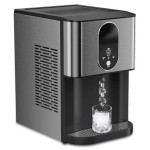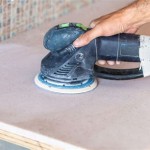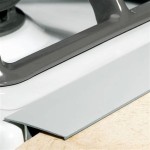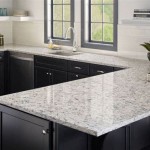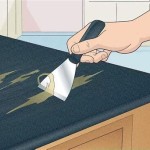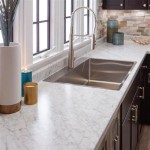Understanding and Removing Water Stains on Marble Countertops
Marble countertops, prized for their elegance and timeless beauty, are a desirable feature in many homes. However, marble is a porous natural stone, making it susceptible to staining, particularly from water. Understanding the nature of these water stains and implementing appropriate preventative and restorative measures is crucial for maintaining the pristine condition of marble surfaces.
Water stains on marble are not always what they seem. They can manifest in various forms, from dull spots to dark rings, and their appearance often reflects the specific mineral content of the water, the type of sealant (if any) applied to the marble, and the duration of exposure. The seemingly simple "water stain" can, in reality, be a complex interaction of factors that affect the marble's surface.
The susceptibility of marble to water stains stems from its composition, primarily calcium carbonate. This mineral reacts with acidic substances, including slightly acidic water, leading to etching or dulling of the surface. Even seemingly neutral water can leave mineral deposits behind as it evaporates, creating visible rings or spots, especially in areas with hard water. Furthermore, unsealed or poorly sealed marble is more vulnerable, as water penetrates the porous surface, causing deeper and more persistent stains.
Identifying the Type of Water Stain
Accurately identifying the type of water stain present on a marble countertop is the first step towards effective removal. Different types of stains require different approaches, and using the wrong method can potentially worsen the problem or cause further damage to the delicate marble surface.
Hard Water Stains:
These stains are typically characterized by white or light-colored rings or spots left behind by mineral deposits in hard water. Hard water contains high concentrations of minerals like calcium and magnesium. As the water evaporates, these minerals are left on the surface, creating a visible residue. These stains are generally more noticeable on darker marble surfaces.Watermarks or Rings:
Sometimes, water left on the marble simply evaporates, leaving behind a watermark or ring. This might not necessarily be a mineral deposit but rather a slight change in the surface texture or light reflectivity where the water sat. These marks can be more subtle and are often caused by the water disrupting the existing sealant or polish on the marble.Etching:
Etching occurs when acidic water or liquids come into contact with the marble surface and dissolve some of the calcium carbonate. This results in a dull or slightly rough area. Etching is often mistaken for a stain, but it's actually a form of surface damage. Lemon juice, vinegar, and even some cleaning products can cause etching on marble.Dark Stains:
If water has penetrated deep into the marble, especially if the marble is unsealed, it can cause a darker stain. This type of stain might be due to the water carrying dirt or other contaminants into the stone. It can also occur if the marble has absorbed colored liquids along with the water. Dark stains are the most challenging to remove.Carefully observing the appearance, color, and texture of the stain is crucial for proper diagnosis. Consider where the stain is located and what substances might have come into contact with the area. This information will guide the selection of the appropriate cleaning and restoration methods.
Preventative Measures to Protect Marble Countertops
Prevention is always better than cure when it comes to preserving the beauty of marble countertops. Implementing proactive measures can significantly reduce the risk of water stains and other forms of damage, minimizing the need for extensive cleaning and restoration later on.
Sealing:
Applying a high-quality marble sealant is the most crucial step in protecting the countertop. Sealants penetrate the porous surface of the marble, creating a barrier that repels water and other liquids. The type of sealant and frequency of application will depend on the type of marble and the level of use the countertop receives. Consult with a stonework professional to determine the best sealant for specific needs. Reapplication should be done periodically, as sealants wear down over time. A simple water test can determine if resealing is necessary: if water beads up on the surface, the sealant is still effective; if it soaks in, resealing is needed.Immediate Cleanup:
Promptly wiping up spills is essential to prevent liquids from penetrating the marble. Avoid leaving water, juice, or other beverages sitting on the countertop for extended periods. Use a soft cloth to absorb the spill and then wipe the area clean with a damp cloth, followed by a dry cloth to ensure no residual moisture is left behind.Use of Coasters and Placemats:
Encourage the use of coasters under drinks and placemats under plates and food items. This creates a physical barrier between the marble surface and potential spills or drips, minimizing the risk of staining. Choose coasters and placemats that are non-abrasive to avoid scratching the marble.Appropriate Cleaning Products:
Avoid using harsh cleaning products, abrasive cleaners, or acidic substances on marble countertops. These can damage the sealant or etch the marble surface. Opt for pH-neutral cleaners specifically designed for natural stone. A mixture of mild dish soap and warm water is often sufficient for routine cleaning. Always test any cleaning product in an inconspicuous area first to ensure it doesn't cause any discoloration or damage.Regular Dusting:
Regularly dusting the countertop with a soft, dry cloth helps to remove loose dirt and debris that can scratch the surface or become embedded in the marble when it gets wet. This simple step helps maintain the marble's shine and reduces the need for more aggressive cleaning methods.Implementing these preventative measures will significantly contribute to the longevity and beauty of marble countertops, minimizing the occurrence of water stains and preserving their elegance for years to come.
Methods for Removing Water Stains
Despite taking preventative measures, water stains may still occur on marble countertops. In such cases, it's important to address the stains promptly and use appropriate methods to remove them without causing further damage to the marble.
For Hard Water Stains:
A solution of distilled water and baking soda can often be effective for removing hard water stains. Create a paste by mixing baking soda with a small amount of distilled water. Apply the paste to the stained area and gently rub it in using a soft cloth. Let the paste sit for 15-30 minutes, then rinse it off with distilled water and dry the surface thoroughly with a clean, soft cloth. Avoid using excessive amounts of water and ensure the surface is completely dry to prevent further staining.For Watermarks or Rings:
Sometimes, simply buffing the area with a dry, soft cloth can remove watermarks or rings. If that doesn't work, try using a marble polishing compound. Apply a small amount of the compound to a clean, soft cloth and gently buff the affected area. Follow the manufacturer's instructions carefully. After buffing, wipe the surface clean with a damp cloth and dry it thoroughly.For Etching:
Etching, being a form of surface damage, requires a different approach. Minor etching can sometimes be addressed with marble polishing compounds. However, more severe etching may require professional restoration. A professional stonework restorer can use specialized equipment and techniques to grind down the surface of the marble and repolish it, removing the etched area and restoring the original finish. This is a delicate process that should only be performed by experienced professionals.For Dark Stains:
Removing dark stains that have penetrated deep into the marble can be challenging. One approach is to use a poultice. A poultice is a paste-like mixture of absorbent material and a cleaning agent that is applied to the stain to draw it out. Several poultice recipes are available, depending on the nature of the stain. For example, a poultice made with baking soda and hydrogen peroxide can be effective for removing organic stains. Apply the poultice to the stained area, cover it with plastic wrap, and let it sit for 24-48 hours. Remove the poultice and rinse the surface with distilled water, then dry it thoroughly. Repeat the process if necessary. For persistent dark stains, seeking professional help is recommended.Cautionary Notes:
When attempting to remove water stains from marble, it's crucial to exercise caution. Always test any cleaning solution or technique in an inconspicuous area first to ensure it doesn't cause any damage or discoloration. Avoid using abrasive materials or harsh chemicals, as these can scratch or etch the marble surface. Work in small areas and gently rub or buff the area. Thoroughly rinse and dry the surface after each cleaning step. If unsure about any aspect of the cleaning process, consult with a stonework professional.Successfully removing water stains from marble countertops requires patience, the right techniques, and an understanding of the specific type of stain being addressed. Regular maintenance and prompt attention to spills will minimize the occurrence of stains and preserve the beauty of the marble for years to come.

Simple Tricks For Removing Hard Water Stains From Marble Surfaces Without Damage Marblelife

How To Remove Stains And Water Marks From Marble Countertops Brownstone Cyclone

Remove Water Stains On Carrara Marble

How To Remove Stains And Water Marks From Marble Countertops Brownstone Cyclone

How To Remove Hard Water Stains From Marble Handmade Weekly

How To Remove Hard Water Stains From Marble Handmade Weekly

How To Get Rid Of Hard Water Stains On Marble And Granite

Granite Countertop Slabs Tips To Remove Water Marks

Remove Water Stains On Carrara Marble

How To Remove Hard Water Stains From Marble Handmade Weekly


